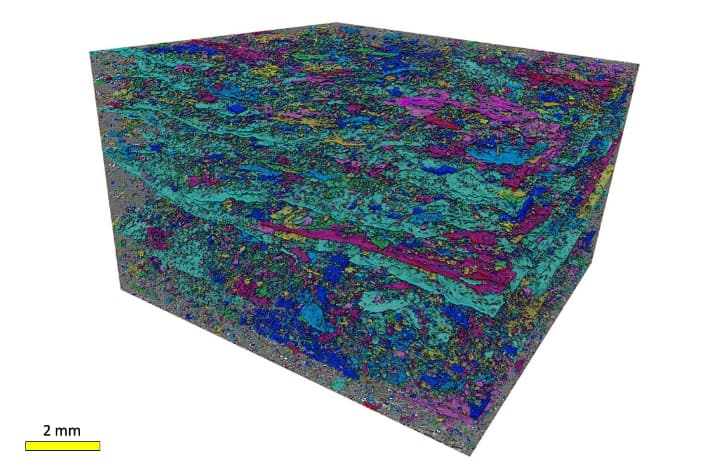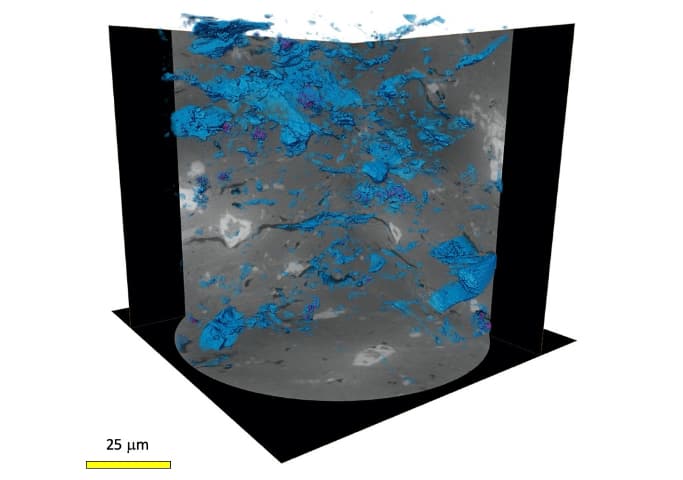- Home
- Industry
- Industry news
- Shale rock multi-scale...
Shale rock multi-scale imaging by X-ray micro- and nano-tomography
31-05-2021
Multi-scale tomography reveals microfractures and porosity in Permian shale rock samples originating from the Ordos Basin, China, from a depth of 1.8 km.
Shale is a source of natural gas and its exploitation is increasing. In the past decade, shale gas production has had a strong impact on supply, consumer prices for natural gas, and the environment. The characteristics of shale reservoirs are closely related to their potential for shale gas production, which is of particular interest in energy exploration and resource exploitation. The pore types of shale reservoirs in different sedimentary environments are variable. It is commonly believed that marine shale reservoirs are dominated by organic matter pores with a large gas adsorption capacity. These pores can effectively accumulate shale gas, but whether inorganic pores also have the ability to store gas is worthy of investigation.
Researchers came to the ESRF to image shale samples from the Permian period in the northeastern part of the Ordos Basin, China, collected from a depth of around 1.8 km. They wanted to identify the location of porosity in the samples (i.e. matrix versus organic matter) and they wanted to find out whether the samples contain microfractures that would facilitate the onset of primary migration of hydrocarbon.
The shales had been formed in a transitional sedimentary environment, and the pore types are dominated by inorganic pores whose volumes are often larger than that of organic pores. Multi-resolution X-ray microtomography images acquired on beamlines BM05 (Figure 1) and ID16B (Figure 2) allowed these different types of pores to be visualised in 3D at voxels sizes ranging from 4 micrometres to 25 nm (resolution is 2-3x voxel size). The analysis of the pore shapes extracted from the tomograms enabled the quantification of various parameters such as porosity, coordination number and pore size distribution. The results may warrant additional research on shale reservoir heterogeneity and its influencing factors if the inorganic pores are found to have a significant capacity for gas storage, which varies with pore types. Multi-scale X-ray tomography can help identify the types of inorganic matter pores that can accumulate gas, which is helpful to evaluate the shale gas content in the study area as well as to predict optimal conditions for gas production.
This work is part of the PhD thesis of Chunqi Xue, visiting researcher at the University of Oslo, Norway. Elodie Boller, Paul Tafforeau, Kudakwashe Jakata, Pauline Gravier and Benoît Cordonnier participated in the X-ray imaging studies.
Top image: Multi-scale imaging of shale rock at ID16B at voxel sizes of 241 nm, 100 nm, 50 nm, and 25 nm. 2D slices through the tomographic data. Image credit: Chunqi Xue, Benoît Cordonnier and François Renard, University of Oslo.





